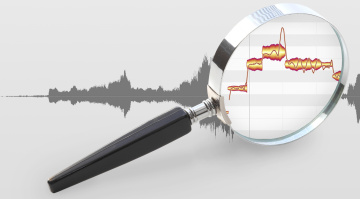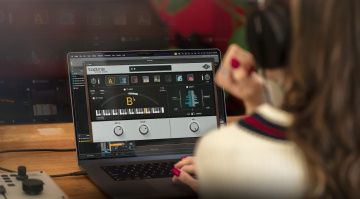Perfect Vocals: How to Make Any Voice Sound Professional
Achieve Professional Results Quickly by Using the Right Tools
This workshop focuses on enhancing vocal and speech recordings to achieve optimal sound quality – perfect vocals. What steps are necessary to optimize vocal tracks, podcasts, speech recordings, and dialogue? We will explain what you need to pay attention to and will use the DynAssist plugin from NoiseWorksAudio as an example.
The Most Important Details at a Glance
- Consistent vocal levels are the foundation of any professional vocal or speech recording
- NoiseWorksAudio DynAssist delivers natural, transparent gain riding by analyzing and correcting level jumps ahead of time
- Breath noise, harsh sibilance, and background hum can be reduced quickly with dedicated tools inside DynAssist
- Clean vocal processing becomes faster and more accurate thanks to ARA support in compatible DAWs
- With balanced levels and reduced artifacts, vocals become mix-ready long before EQ, compression, or reverb are applied
How to Achieve Perfect Vocals
Why is Consistent Volume Is Important for Perfect Vocals or Speech Recordings?
Consistent vocal levels are the foundation of every professional vocal chain. This ensures that compressors, EQs and effects react predictably and deliver a cleaner, more controlled result. It also guarantees that the vocals are “correctly” positioned in the mix. Consistent volume is also important for voice recordings, such as interviews, podcasts, dialogue in film scenes, and audiobooks.
However, achieving this consistency during the recording process can be challenging. Those who have good control over their voice and distance from the microphone have an advantage. However, this requires experience and discipline during recording, and even then, results may not be as desired. Audio technology offers a number of options to achieve perfect vocals and speech recordings, but the right tools are essential.
A compressor is one of the most common methods for controlling dynamics, which is what we’re talking about here. However, using one requires knowledge, even though convenient solutions are now available. Vocals can be particularly tricky in this regard because the set threshold, one of the most important parameters in most compressors, is sometimes not enough to effectively capture every part of a signal. This can result in some parts being over-compressed while others are not compressed at all during recording. Sound professionals address this issue by using a second compressor.
This approach, however, requires a lot of fine-tuning and knowledge of how to use a compressor. Additionally, this audio effect delivers optimal results for vocals when the source material has a consistent volume.
How Do You Achieve Perfectly Balanced Vocals in Any Recording?
That’s why preliminary processing is key. There are various strategies for achieving this goal. For instance, you can split the vocal recording into separate parts in the digital audio workstation (DAW) and adjust the volume of each part individually. This method requires precise editing and is time-consuming for long recordings.
The same applies to DAW automation, which can be effective when done before further processing with additional effects and audio processors. However, this method is also time-consuming, especially for large projects.
A simple solution for achieving perfect vocals is a so called ‘vocal rider‘. NoiseWorksAudio offers GainAim, a plugin designed specifically for this task, which allows you to control the volume in a targeted manner. However, GainAim is designed for real-time use and may not always respond optimally to rapid changes in dynamics. To achieve the best possible results, the tool must be able to “see into the future” to recognize large dynamic jumps in advance. That’s where DynAssist, their in-house tool, comes into play.
Create Perfect Vocals with DynAssist!
Tailored for post-processing, DynAssist also handles real-time editing and performs “gain riding” with a “glimpse into the future.” The plugin works like an intelligent vocal engineer, analyzing level fluctuations and automatically correcting them. This method leads to a much more natural result.
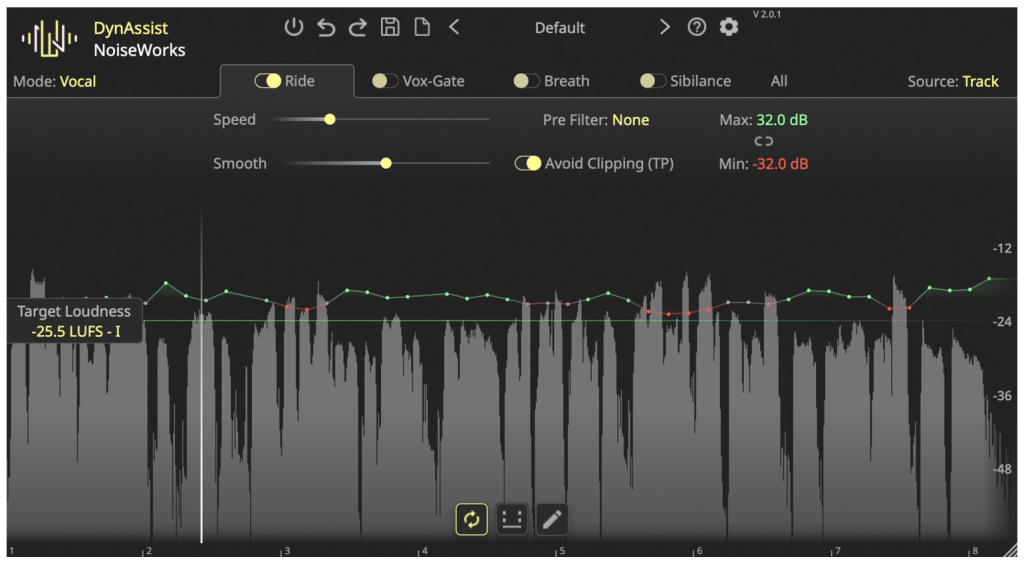
The tool is designed to be quick and easy to understand yet offers enough depth to handle any type of audio material. DynAssist analyzes recordings and makes significant improvements, even with the default settings. These improvements are displayed in the waveform: the green curve shows signal boosts and the red curve shows reductions.
Of course, you can also make fine adjustments. The “Ride” section of the plugin allows you to set the target volume, i.e., the target loudness. The Speed and Smooth controls allow you to adjust how subtle or strong the vocal riding is. The “Avoid Clipping” function ensures that the riding is never too strong and distorts the signal. Therefore, this function should always be activated.
How to Remove Sibilance and Breath Noise for Perfect Vocals?
In addition to achieving the most consistent level possible, there are a few other aspects you can address during post-production to perfect your vocals. Vocals and speech sound more professional when harsh sibilance and distracting breath noise are tamed. You can counteract this during recording by using a pop filter and positioning the microphone off-axis. However, you can also improve the sound considerably during post-production.
First, focus on the breathing noises. Breath noise reduction improves vocal intelligibility and removes distractions between phrases. Clean transitions make spoken word and singing sound more polished and intentional. On top of that, these noises can sometimes negatively impact the sound quality of vocals.
DynAssist’s Breath Detection feature conveniently controls breathing noises. After analyzing the audio, it automatically detects the breath noises and reduces them according to your settings. A good value for natural results is -10 to -20 dB. The breath noises are also visually displayed as dark areas in the waveform.
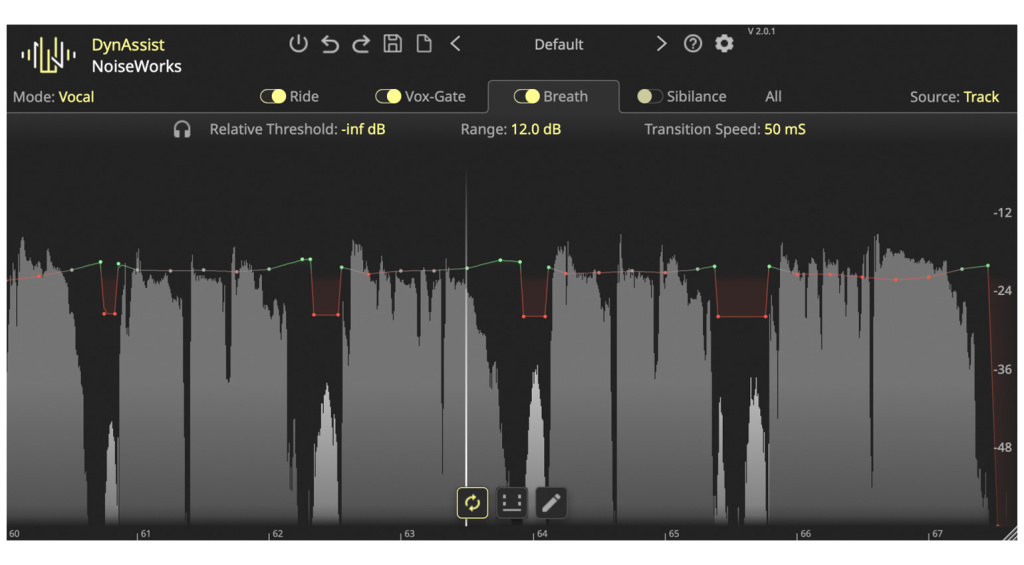
De-essers are essential tools for achieving perfect vocals because they reduce harsh, sibilant sounds. De-essing reduces harsh high-frequency resonances that distract from articulation. Most DAWs have this kind of audio effect, and it’s usually worth editing the recording with a de-esser. DynAssist offers a convenient solution in this regard as well. “Looking ahead” at the source material is useful here.
In the Siblance section, good results can be achieved with the default settings. Setting the threshold below -16 dB reduces the S sounds further. However, be sure to check the result because overdoing it with the de-esser can make it sound like lisping.
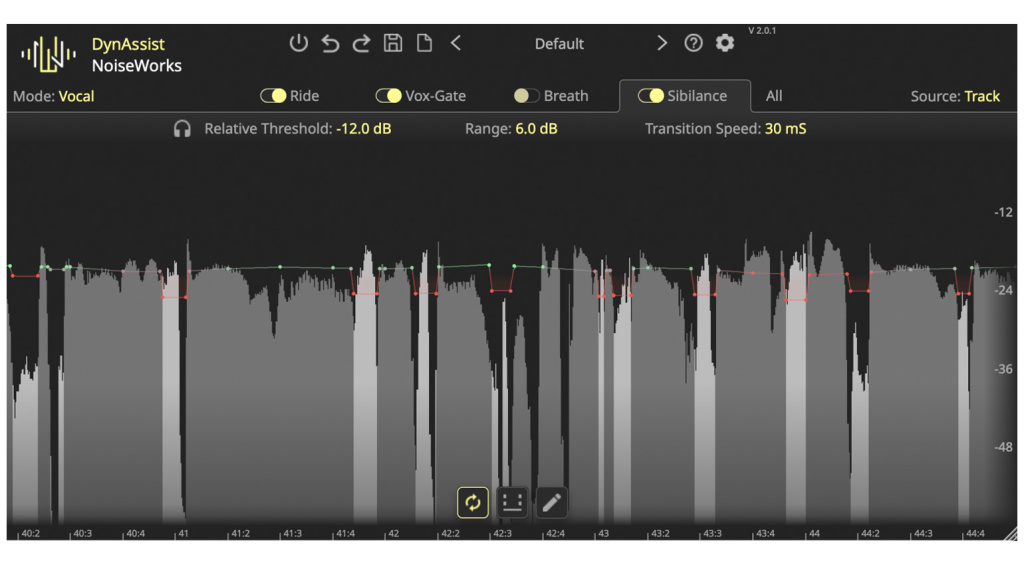
Using a noise gate is also very practical. If the signal is below the specified threshold, the gate effectively mutes the recording or reduces the volume by a certain amount. This eliminates distracting background noise during pauses in speech or singing. This function is called Vox Gate in DynAssist and can be configured with just a few parameters.
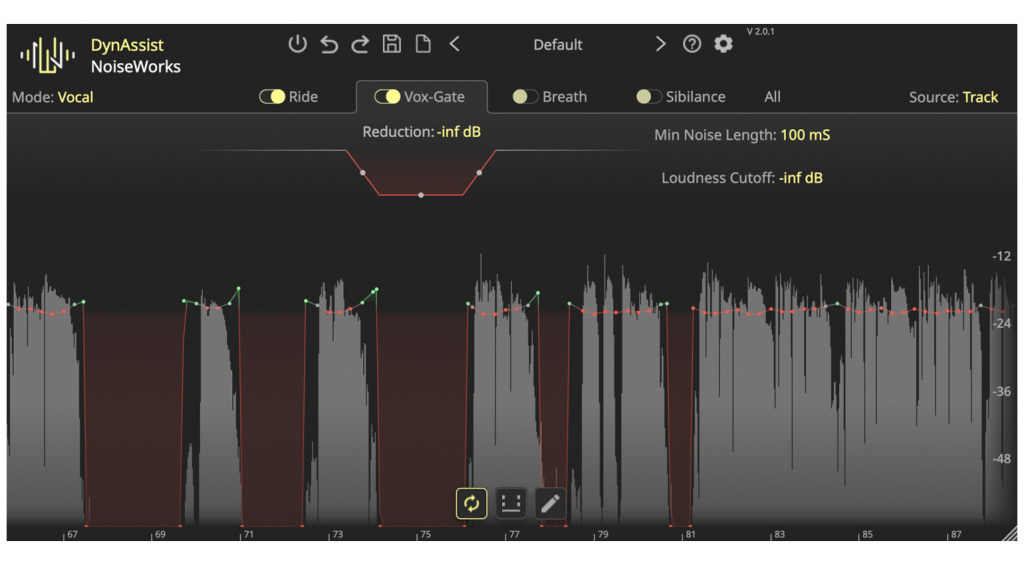
Incidentally, you can deactivate the individual work areas at any time. This is useful if, for example, you use DynAssist for vocal riding and removing breath noises, but use a different plugin for de-essing.
DynAssist Also Uses ARA to Get Perfect Vocals
ARA (which stands for Audio Random Access) is an interface that ensures seamless communication between DAW and plugin. Plugins thus gain direct access to audio material without it first having to “run” through the plugin. Via ARA, the audio material to be processed is immediately analyzed, edited, and then transferred back to the DAW, so to speak.
To use ARA, your DAW must also support this interface. This applies to the DAWs Studio One, Apple Logic Pro, Steinberg Cubase & Nuendo, Reaper, BandLab Cakewalk, Samplitude, and Pro Tools. Software such as Ableton Live or Bitwig Studio does not (yet!?) support ARA, but DynAssist works here via transfer mode. This involves recording the audio material once with the plugin, so to speak, in order to edit it afterwards. The following video shows you how it works:
FAQ – Perfect Vocals & Professional Speech Recordings
Why is consistent vocal volume essential for professional results?
Stable volume ensures vocals sit correctly in the mix, prevents over-compression, and provides a clean foundation for EQ, dynamics, and effects.
What makes compressors difficult to use for vocal consistency?
A single threshold often can’t capture every phrase. Quiet parts may remain untouched while loud transients get over-compressed, requiring additional processing knowledge.
How does DynAssist improve vocal recordings compared to traditional vocal riders?
DynAssist “looks ahead,” analyzes incoming audio, and adjusts levels intelligently. This creates more natural gain riding than real-time tools that react too late to big dynamic jumps.
How do I reduce breath noise and harsh sibilance effectively?
Use breath-reduction processing between –10 and –20 dB for natural results, and apply a de-esser carefully to avoid a lisping sound. DynAssist handles both steps automatically.
What’s the benefit of ARA in vocal editing workflows?
ARA gives the plugin direct access to the audio file, allowing instant analysis, faster workflow, and more precise processing in DAWs like Logic, Cubase, Studio One, and Reaper.
Perfect vocals require consistent levels, reduced artifacts and clean transitions. DynAssist automates gain riding, breath control and sibilance reduction with look-ahead processing. This creates a stable vocal foundation before EQ, compression or effects are applied.
Conclusion
To achieve perfect vocals, it is important to ensure that the recording has a relatively constant volume before applying any processing with reverb, equalization (EQ), or other effects. You can easily achieve this with a specialized tool known as a vocal rider.
NoiseWorksAudio offers DynAssist, a plugin that does this job very well with the default settings and offers enough options for fine tuning. It also includes tools for reducing breath sounds and sharp “S” sounds. In most cases, vocals and speech sound much clearer after processing with a de-esser.
A noise gate mutes pauses when necessary, which improves the signal. DynAssist offers a Vox Gate function designed for this purpose. With the right tools, it’s quite easy to edit vocal and speech recordings to provide a good basis for the creative process.
Get NoiseWorksAudio DynAssist for Your DAW
NoiseWorksAudio DynAssist runs on macOS (12.0 or newer) and Windows (10 or newer) as a VST3, AU, and AAX plugin. The regular price is €149, but until November 30, 2025, the plugin is discounted to €99.
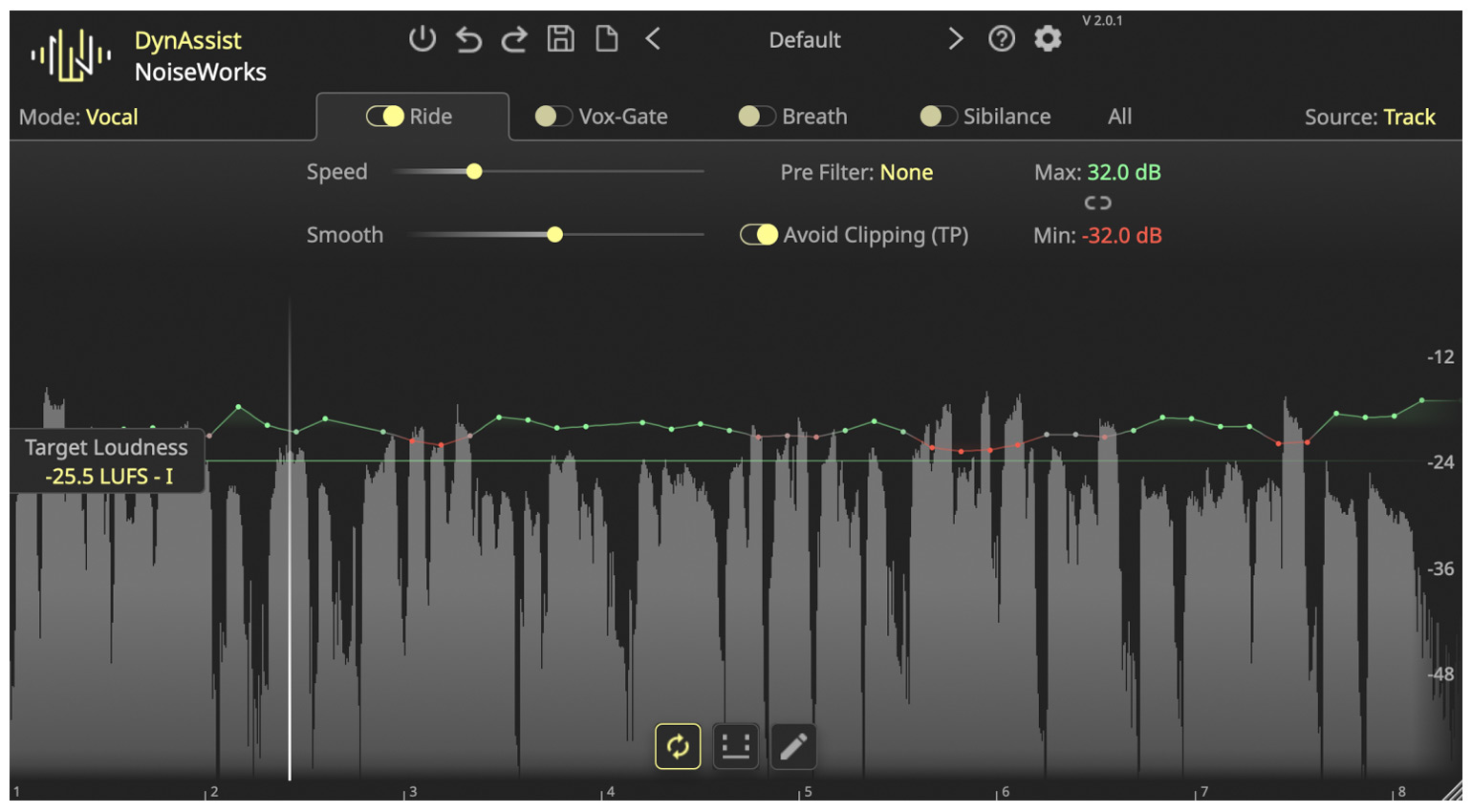
You can find more information about DynAssist here at NoiseWorksAudio.
More Information
- Manufacturer’s website
- The Best Vocal Plugins for Music Production
- The Best Condenser Microphones for Vocal Recording
- The Best Value Microphones for Vocals and Speech Recording
- More studio news & features
More Videos on NoiseWorksAudio DynAssist
*Note: This workshop, “Perfect Vocals Made Easy,” is sponsored by NoiseWorksAudio and contains affiliate links that help finance our website. Rest assured, the price remains the same for you! If you purchase something through these links, we receive a small commission. Thank you for your support!



 2,1 / 5,0 |
2,1 / 5,0 | 



